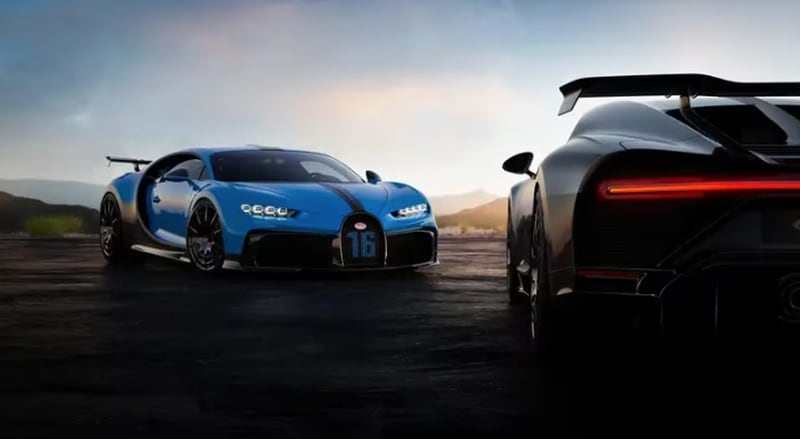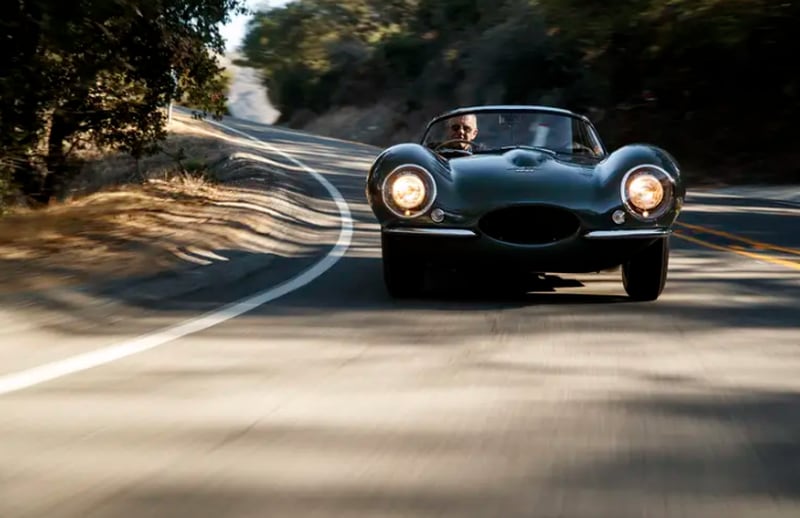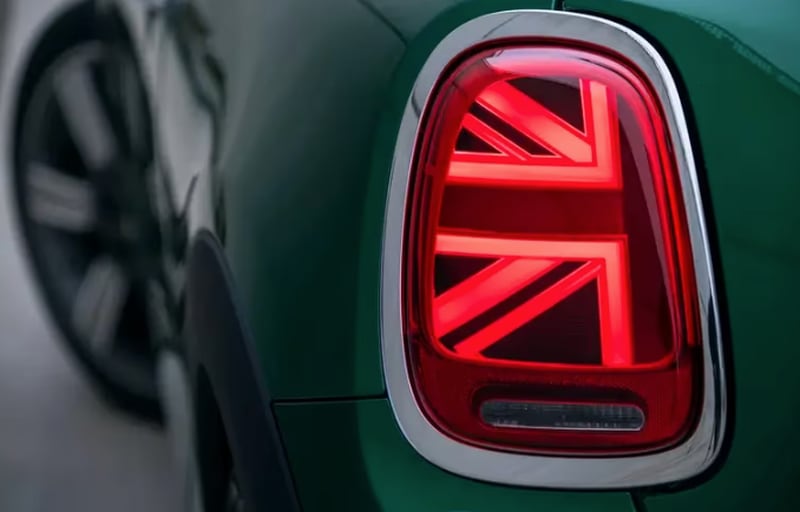Except in the case of Ferrari, which continues to use its traditional rosso corsa against all odds, today the rest of the teams paint their cars in the colors of their sponsors. However, there was a time when that was not the case. In fact, each vehicle was distinguished by the color of the manufacturer’s country. We tell you their stories here.
When the 2023 Formula 1 calendar was announced, it was considered the longest in history, with a total of 24 races, starting in Bahrain and ending in Abu Dhabi. However, shortly after this season, two dates have already been suspended.
And it is that after the cancellation of the Chinese Grand Prix in April, last week the climatic emergency in northern Italy, with heavy rains and floods, forced the cancellation of the Grand Prix from Emilia-Romagna, the sixth date of the season.
This weekend, however, there will be Formula 1, the premier class will return with an iconic race and one of the most glamorous of the Grand Cirque. We are talking about the Monaco GP, which has been part of the championship since the first season took place in 1950 and which this year renewed its contract until 2025.
In this Sunday’s Grand Prix, precisely, McLaren will wear a change of colors in its car, with which it will honor one of the greatest achievements in the history of motorsport, such as obtaining the “Triple Crown”. That is to say, having won the Monaco Formula 1 GP, the Indianapolis 500 in IndyCar, and the 24 Miles of Le Mans in the WEC.
Thus the single-seaters of Lando Norris and Oscar Piastri will combine white with the characteristic orange of McLaren. And speaking of colours, did you know that each country (team/brand) has an institutionalized color in motorsport?
Basically, it is a trend that appeared in the interwar period to differentiate cars according to their nationality and in which eminent British, French, German and Italian manufacturers took part, all recognized as precursors of the sports car.
Over the years, each of these clans has created tasty stories, defending their principles and their colors. Here we tell you several…
Silberpfeil: German arrows swapped white for silver
In mid-2019, the Mercedes-AMG team arrived at the German F1 GP with a color change in both their cars: instead of the traditional silver of German cars, both had a white trunk. Many wondered why, but not the most connoisseurs of Teutonic history.

At home, Mercedes-Benz commemorated 125 years in the sports car and he wanted to nod to his own legacy, one that, in particular, is peppered with a fact that, at this point, feels more like myth. Which is it?
It is clear that silver has become the representative color of German racing cars, and this trend imposed by the old Mercedes-Benz was quickly followed by Audi and Porsche. The only one that never dressed in silver – and somewhat marks that distance from its eternal rival – was BMW, which uses white for its own way.

It turns out that white is precisely the tone that has distinguished German sports cars for years. That, until 1934, a Mercedes-Benz W25 was “stripped of paint” at the Nürburgring. The story goes that each car had to start weighing less than 750 kilos, a material that the W25 exceeded by a kilo. Thus, the mechanics would have worked all night sanding the bodywork. A few hours later, driver Manfred von Brauchitsch crossed the finish line in first place with his “silver” car.
However, in 2008, researcher Eberhard Reuss found stroke regulation. At no time is a weight required, and no photos from this weekend were found with the W25 in white. Could it be that someone forgot the painting?

Bleu de France: Congratulations to Go France!
Unlike German, Italian and British makers, today’s most renowned French actors were not particularly assiduous in the sports car in its infancy, with the exception of Bugatti. The first French brands that launched the car in competitions during events as famous as Le Mans ended up disappearing. Among them, Chenard-Walcker (disbanded in 1946), Lorraine-Dietrich (1934), Talbot-Lago (1960) or Delahaye (1954).

On the other hand, what has not died out is the tradition of running in Bleu de France blue, a tone with its own code and which obeys more than eight centuries of tradition in the coat of arms of the French monarchy. In French cars, it was used for the first time in 1903 during the Grande Course Gordon Bennett, organized in the Sarthe, on the same circuit as the 24 Hours of Le Mans.

The idea was simple: that the public could distinguish which French cars should be supported. The cars of Panhard, Mors, Richard-Brasier, Turcat-Méry and De Dietrich competed in blue during the event. As in the sports field, the vogue for French cars in blue only resulted in success. And these came precisely from the hand of Bugatti in the 1920s.
On the strength of this healthy tradition of highlighting its historical heritage, the Molsheim firm has created models such as the Veyron, the Divo or the Chiron itself in recent years, all nicknames of its former French glories at the wheel.

Rosso Corsa: A vibrant and unconditional love for the automobile
Today, for many, the bright red in a car is associated with Ferrari, but this could well be seen as a lack of respect for the older Italians of the clan, since in 1920 Alfa Romeo, Lancia and Maserati were the first to ride with pride. the Rosso Corsa in their body.

Another milestone that sealed the red fate of the Peninsulars came in 1924 and it was marked by Fiat. The Italian Fabbrica Automobili Torino wanted to set a precedent by developing the Mefistofele, a sharp weapon to beat the world speed record of the time. The V12-powered monster – named after the disciple of Satan, product of its deafening blast – traveled to France to record a top speed of 234.9 km/h. You didn’t need such a name to know you were in the presence of a demon.

Two decades later, at the end of the 1940s, Alfa Romeo wore Corsa Red again, but this time in the 158 Alfetta that we remember, absolute dominator at the dawn of Formula 1 with the Italian pilots Luigi Fagiolo, Giuseppe Antonio ‘Nino’ Farina and Argentinian Juan Manuel Fangio. In fact, Farina’s 1950 victory in the UK was the first race in F1 history. In the end he would be champion and the following season Fangio would repeat the crown for the Milan constructor.
Over the years, Ferrari has been responsible for asserting the unconditional vocation of red in its trams and in F1, to the point that today its invention is attributed to it. But beware, all Italians without distinction -including Lamborghini- built the Rosso Corsa legend from passion.

British Racing Green: The green of the slabs on narrow English roads
Halfway between the green forest and hunter green, British Racing Green appears to be the perfect blend between these two conceptual colours. Due to the winding geography of the United Kingdom, English racing cars were distinguished by a rather compact size, low-torque push engines and a handling exceptional. But why were they wearing green?

The explanation is also found at the beginning of the last century and coincides with the French case, linked to the championship of the American millionaire James Gordon Bennett. This famous tournament provided that the winner of each edition would organize the race the following year. In 1902, the British won with a Napier car driven by Selwyn Edge, a representative of the British Flyers Club, which traveled the Paris-Innsbruck route in 11:02:52.6. All was joy, but in 1903 a more serious problem arose.

Outdated UK legislation has set a 20km/h limit on its roads and, despite organizers discussing the issue with the authorities, they have not compromised. The solution? Go running in Ireland. All three British cars that took part in the test wore trefoil green as a sign of respect and gratitude to their new hosts, a color that eventually became legend. races.

So for over a century brands such as Jaguar, Bentley, Rolls-Royce, Aston Martin and Mini have used shades of British Racing Green in their own shades, and no one can claim ownership of the color of origin. Thank you very much, Ireland!
Source: Latercera
I’m Rose Brown , a journalist and writer with over 10 years of experience in the news industry. I specialize in covering tennis-related news for Athletistic, a leading sports media website. My writing is highly regarded for its quick turnaround and accuracy, as well as my ability to tell compelling stories about the sport.


